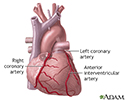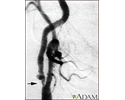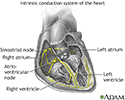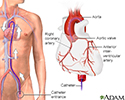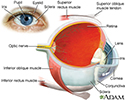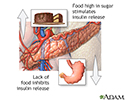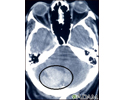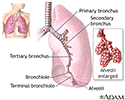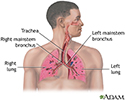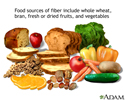Multimedia Gallery
NICU consultants and support staff
If your newborn needs to be admitted to the neonatal intensive care unit, or NICU, a group of different medical professionals will be there to help. Here's a rundown of some of the consultants and support staff you can expect to meet in the NICU.
Each person who works in the NICU has a different specialty: Your bedside NICU nurses work most closely with your baby, providing care and observing closely for important changes. A neonatologist specializes in the health problems of newborns. They supervise and coordinate care. A cardiologist is trained to diagnose and treat diseases of the heart and blood vessels. If a baby has a heart defect, a cardiovascular surgeon will perform the surgery to fix it.
An infectious disease specialist treats babies who have serious infections, including infections of the blood, brain, or spinal cord. A neurologist diagnoses and treats conditions of the brain, nerves, and muscles. You might see a neurologist if your baby has seizures, or is born with a nervous system condition like spina bifida. When the problem needs to be corrected with surgery, a neurosurgeon will perform the operation.
An endocrinologist diagnoses and treats hormone problems, such as diabetes. Gastroenterologists are expert at treating digestive problems of the stomach and intestines. A hematologist-oncologist treats blood disorders and cancer. An infant might see this type of doctor for a problem with blood clotting. A nephrologist focuses on diseases of the kidneys and urinary system. If your baby was born with a kidney problem, you will talk to this doctor about treatments, and possibly the need for surgery. Pulmonologists treat newborn lung problems, such as respiratory distress syndrome. You might see this doctor if your baby was born with a breathing condition. Then you'll work with a respiratory therapist to treat the problem.
If you had a very high-risk pregnancy, you'll work with a maternal-fetal medicine specialist. This doctor can help if your baby was born prematurely, or you had twins or other multiples. Babies who are born with eye defects see an ophthalmologist, a doctor who diagnoses and treats eye problems. If your newborn needs x-rays, an x-ray technician will take the test, and a radiologist will read the results.
Sometimes babies are born with or at risk for developmental delays. If that is the case, a developmental pediatrician will test your child, and help you find the right care once you leave the NICU. The pediatrician may recommend that you see an occupational or physical therapist to assess your baby's reflexes, movement, and feeding. While you're in the NICU, you'll also see a neonatal nurse practitioner. This specialist will work closely with your doctor to make sure your baby gets just the right care.
Being in the NICU can feel scary and new at first. Don't be afraid to ask questions. Your NICU medical team is there to care for your baby, and to make sure you're prepared to take over that care once you get home.
NICU consultants and support staff
Review Date: 10/20/2024
Reviewed By: Neil K. Kaneshiro, MD, MHA, Clinical Professor of Pediatrics, University of Washington School of Medicine, Seattle, WA. Also reviewed by David C. Dugdale, MD, Medical Director, Brenda Conaway, Editorial Director, and the A.D.A.M. Editorial team.
Animations
- Abdominal aortic aneurysm
- Abdominal pain
- Aneurysm description
- Arrhythmias
- Atherosclerosis
- Atrial fibrillation
- Balloon angioplasty - short...
- Blood clotting
- Blood flow
- Blood pressure
- Brain components
- Cardiac and vascular disord...
- Cardiac arrhythmia - conduc...
- Cardiac arrhythmia symptoms
- Cardiac arrhythmia tests: E...
- Cardiac arrhythmia: Additio...
- Cardiac arrhythmia: Heart p...
- Cardiac arrhythmia: Physica...
- Cardiac arrhythmia: Taking ...
- Cardiac catheterization
- Cardiac catheterization - a...
- Cardiac conduction system
- Cardiac CT scan overview
- Cardiomyopathy
- Cardiovascular system
- Causes and side effects of ...
- Cerebral aneurysm
- Chest pain
- Childhood obesity
- Cholesterol and triglycerid...
- Coronary artery bypass graf...
- Coronary artery disease
- Coronary artery disease (CA...
- Directional coronary athere...
- Electrocardiogram
- Epinephrine and exercise
- Erection problems
- Essential hypertension
- Exercise
- Hardening of arteries
- Healthy Guide to Fast Food
- Heart attack
- Heart bypass surgery
- Heart failure
- Heart formation
- Heartbeat
- How to use a pill cutter
- Hypertension
- Hypertension - overview
- Muscle types
- NICU consultants and suppor...
- Nuclear stress test
- Obstructive sleep apnea
- Percutaneous transluminal c...
- Preeclampsia
- Smoking
- Smoking tips to quit
- Snoring
- Stent
- Stroke
- Stroke
- Stroke - secondary to cardi...
- Tachycardia
- Tobacco use - effects on ar...
- Tracking your blood pressur...
- Type 2 diabetes
- Understanding cholesterol r...
- Vacation health care
- Valvular heart disease (VHD...
- Varicose veins
- Varicose veins overview
- Venous insufficiency
- What makes your heart beat?
Illustrations
- 15/15 rule
- Absent pulmonary valve
- Acute MI
- Adjustable gastric banding
- Aerobic exercise
- Alcoholic cardiomyopathy
- Alpha-glucosidase inhibitors
- Angina
- Anomalous left coronary artery
- Anterior heart arteries
- Aortic aneurysm
- Aortic dissection
- Aortic rupture - chest x-ray
- Aortic stenosis
- Aortopulmonary window
- Arterial embolism
- Arterial plaque build-up
- Arterial tear in internal c...
- Arteries of the brain
- Artery cut section
- Atherosclerosis
- Atherosclerosis of internal...
- Atherosclerosis of the extr...
- Atrial septal defect
- Atrioventricular block - EC...
- Atrioventricular canal (end...
- Auscultation
- Bacterial pericarditis
- Balance receptors
- Bicuspid aortic valve
- Biguanides
- Biliopancreatic diversion (BPD)
- Biliopancreatic diversion w...
- Biopsy catheter
- Blood pressure
- Blood pressure check
- Blood test
- Bradycardia
- Brain
- Brainstem function
- Breathing
- Bronchial cancer - CT scan
- Calcium benefit
- Calcium source
- Calories and fat per serving
- Cardiac arteriogram
- Cardiac catheterization
- Cardiac catheterization
- Carotid dissection
- Carotid duplex
- Carotid stenosis - X-ray of...
- Carotid stenosis - X-ray of...
- Cataract
- Cataract - close-up of the eye
- Central nervous system and ...
- Cerebellum - function
- Cerebral aneurysm
- Cholesterol
- Cholesterol producers
- Circle of Willis
- Circulation of blood throug...
- Circulatory system
- Clubbing
- Coarctation of the aorta
- Conduction system of the heart
- Constrictive pericarditis
- Coronary angiography
- Coronary artery blockage
- Coronary artery disease
- Coronary artery disease
- Coronary artery fistula
- Coronary artery spasm
- Coronary artery stent
- Crossed eyes
- CT scan
- Culture-negative endocarditis
- Cyanosis of the nail bed
- Cyanotic heart disease
- DASH diet
- Deep veins
- Deep veins
- Deep venous thrombosis - il...
- Developmental process of at...
- Dextrocardia
- Diabetes and exercise
- Diabetic emergency supplies
- Digestive system
- Dilated cardiomyopathy
- Double aortic arch
- Double inlet left ventricle
- Double outlet right ventricle
- Drug induced hypertension
- Duplex/doppler ultrasound test
- Ear anatomy
- Ebstein's anomaly
- ECG
- ECMO
- Effects of age on blood pressure
- Eisenmenger syndrome (or co...
- Electrocardiogram (ECG)
- Emphysema
- Endarterectomy
- Endocrine glands
- Enlarged view of atherosclerosis
- Exercise - a powerful tool
- Exercise 30 minutes a day
- Exercise can lower blood pr...
- Exercise with friends
- Eye
- Facial drooping
- Fast food
- Fish in diet
- Food and insulin release
- Food label guide for candy
- Food label guide for whole ...
- Foot swelling
- Fruits and vegetables
- Glucose in blood
- Glucose test
- Healthy diet
- Healthy diet
- Heart - front view
- Heart - section through the...
- Heart attack symptoms
- Heart beat
- Heart chambers
- Heart valves
- Heart valves - anterior view
- Heart valves - superior view
- High blood pressure tests
- Holter heart monitor
- Hypertension
- Hypertensive kidney
- Hypertrophic cardiomyopathy
- Infective endocarditis
- Insulin pump
- Insulin pump
- Intracerebellar hemorrhage ...
- Intracerebral hemorrhage
- Janeway lesion on the finger
- Jaw pain and heart attacks
- Left atrial myxoma
- Left cerebral hemisphere - ...
- Left heart catheterization
- Leg pain (Osgood-Schlatter)
- Lifestyle changes
- Lobes of the brain
- Low blood sugar symptoms
- Low nasal bridge
- Lower leg edema
- Lower leg muscles
- Lung mass, right lung - CT scan
- Lung mass, right upper lobe...
- Lung nodule, right lower lu...
- Lung with squamous cell can...
- Lungs
- Lymph tissue in the head an...
- Male reproductive anatomy
- Mitral stenosis
- Mitral valve prolapse
- Monitoring blood pressure
- MRI scans
- MUGA test
- Muscular atrophy
- myPlate
- Neck pain
- Neck pulse
- Normal anatomy of the heart
- Normal heart anatomy (cut s...
- Normal heart rhythm
- Normal lung anatomy
- Omega-3 fatty acids
- Otoscope examination
- Pacemaker
- Pericarditis
- Pericardium
- Pericardium
- Peripartum cardiomyopathy
- Pharmacy options
- Pitting edema on the leg
- Plaque buildup in arteries
- Post myocardial infarction ...
- Posterior heart arteries
- Post-MI pericarditis
- Prevention of heart disease
- Progressive build-up of pla...
- Ptosis - drooping of the eyelid
- Pulmonary nodule, solitary ...
- Quitting smoking
- Radial pulse
- Read food labels
- Respiratory cilia
- Respiratory system
- Retrocalcaneal bursitis
- Right atrial myxoma
- Right cerebral hemisphere -...
- Roux-en-Y stomach surgery f...
- Saturated fats
- Secondhand smoke and lung cancer
- Shin splints
- Slit-lamp exam
- Smoking hazards
- Smoking hazards
- Sodium content
- Sources of fiber
- Stable angina
- Starchy foods
- Striae in the popliteal fossa
- Stroke
- Sulfonylureas drug
- Superficial thrombophlebitis
- Superficial thrombophlebitis
- Swan Ganz catheterization
- Taking your carotid pulse
- Thiazolidinediones
- Thoracic organs
- Thromboangiitis obliterans
- Thrombus
- Thyroid cancer - CT scan
- Tobacco and cancer
- Tobacco and chemicals
- Tobacco and vascular disease
- Tobacco health risks
- Totally anomalous pulmonary...
- Totally anomalous pulmonary...
- Totally anomalous pulmonary...
- Trans fatty acids
- Transient Ischemic attack (TIA)
- Tricuspid Regurgitation
- Tricuspid Regurgitation
- Type I diabetes
- Ultrasound, normal fetus - ...
- Ultrasound, ventricular sep...
- Untreated hypertension
- Varicose veins
- Vascular ring
- Venous blood clot
- Ventricular septal defect
- Ventricular tachycardia
- Vertebra, thoracic (mid back)
- Vertical banded gastroplasty
- Vertigo
- Visual acuity test
- Visual field test
- Vitamin B1 benefit
- Vitamin B1 source
- Vitamin C benefit
- Vitamin C deficit
- Vitamin C source
- Vitamin E and heart disease
- Warming up and cooling down
- Wine and health

 Bookmark
Bookmark


















































































